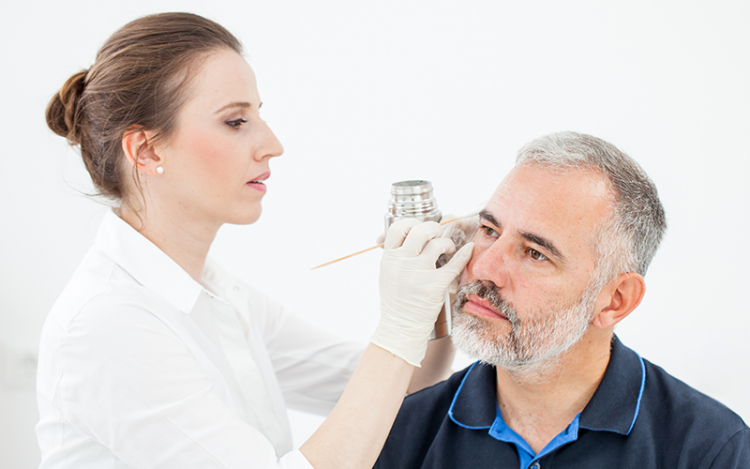Actinic keratosis is a common, but serious, skin condition that can lead to skin cancer if it is not detected and treated early.
Depending on the type of actinic keratosis lesions you have, your age and overall health, there are many different treatment options available that can eliminate actinic keratosis before it develops into a more serious form of skin cancer.
Here is what you need to know in order to choose the actinic keratosis treatment that is right for you.
What Is Actinic Keratosis?
Actinic keratosis, also known as solar keratosis, is an indication of severe sun damage that can eventually evolve into skin cancer if not treated early.
The condition appears as a scaly, crusty patch or lesion on the areas of the body that receive the most sun exposure, including the scalp, ears, lips, face, neck, backs of the hands, forearms, shoulders or chest. People with fair skin who are over the age of 40 are at the greatest risk for developing actinic keratosis.
Often, there is more than one lesion present on the body, and these lesions first appear as small blemishes and feel rough like sandpaper.
Lesions grow slowly and can disappear and reappear later. They are typically between 1/8″ and 1/4″ (about the size of a pencil eraser) and can vary in color from red to tan, pink or skin-toned. Lesions can itch, burn and sometimes even bleed.
Though most actinic keratosis lesions are precancerous, some 10% develop into squamous cell carcinoma. Generally, the more actinic keratosis lesions you have, the higher the risk that they will become cancerous. As many as 60% of squamous cell carcinomas begin as untreated actinic keratosis, and they can spread to surrounding tissue.
Next to basal cell carcinoma, squamous cell carcinoma is the most common form of skin cancer. As many as 10% of these carcinomas spread to internal organs and become life-threatening.
Actinic Keratosis Treatment Options
As with any type of skin cancer, early detection, diagnosis, and treatment of actinic keratosis is critical. There are many different actinic keratosis treatment options, and most can be performed quickly in your dermatologist’s office with little or no pain or downtime. These treatment options include:
Surgical Excision — With surgical excision, your dermatologist will numb the area with a local anesthetic and remove the lesion with a scalpel. Some surrounding normal skin is also removed to ensure the entire lesion is gone. The doctor then sutures the wound.
Curettage — Commonly used to treat skin cancers found on the top layer of the skin, this treatment removes the lesion by scraping the area with a sharp looped-edge instrument called a curette. An electrocautery needle is then used to destroy any remaining cancer cells.
Cryotherapy — Also called cryosurgery, cryotherapy is a simple, non-invasive procedure that uses liquid nitrogen to freeze and destroy growths on the surface of the skin. By applying liquid nitrogen directly to the skin lesions, dermatologists can target the damaged skin cells and destroy them at the cellular level.
Chemical Peels — This treatment uses a solution that makes the skin blister and peel off, killing the affected skin cells. Chemical peels can be done in your doctor’s office and take less than an hour.
Photodynamic Therapy (PDT) — This medical treatment uses laser light to activate photosynthesizing molecules to kill skin cells affected by actinic keratosis. A light-sensitizing cream is applied to the skin, and then the damaged tissue is exposed to a specific wavelength of light to activate the photosensitizing medication. The procedure can be performed in your doctor’s office or in an outpatient setting.
Immunotherapy — In some cases, a combination of two prescription-only topical drugs can be used to trigger an immune response. This immunotherapy activates the immune system’s T cells, which then attack the abnormal precancerous skin cells.
Your dermatologist may decide that the best actinic keratosis treatment for you is a combination of therapies over a period of time. Fortunately, actinic keratosis is almost always curable if detected and treated early. If you notice the signs of actinic keratosis — or any suspicious changes in spots on your skin — don’t wait! Contact your dermatologist for a full-body cancer-screening exam.
Looking to Visit a Dermatologist for Actinic Keratosis?
Want to learn more about treatment options for actinic keratosis and other forms of skin cancer? We have multiple locations throughout the country, so fill out our simple online form to get in touch with us. One of our local team members will reach out to you shortly to answer your questions or schedule an appointment for you to visit us soon.
Find a location near me
or

